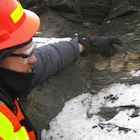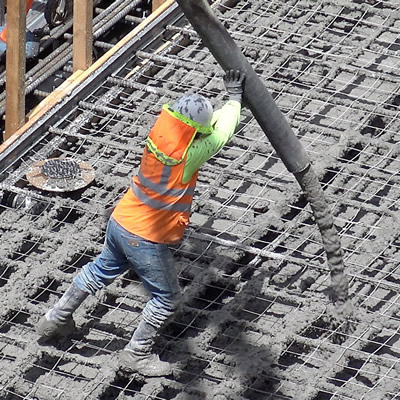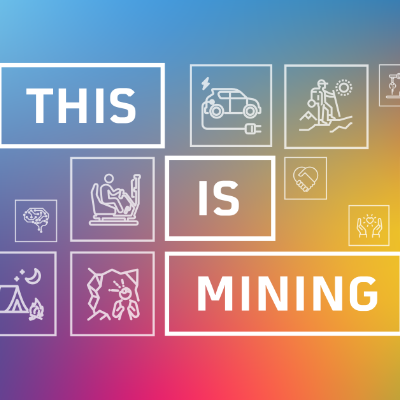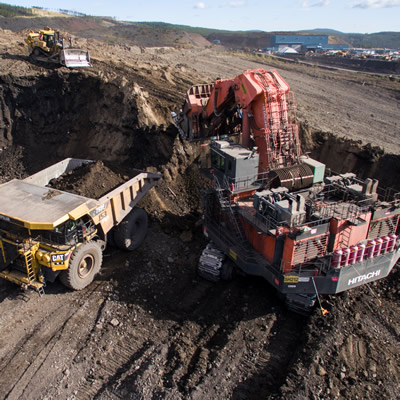It’s not just scientists who discover dinosaurs

1 of 1Discovered by a Syncrude Canada heavy equipment operator in Fort McMurray, this marine reptile fossil is one of the largest, most complete plesi
1 of 1Discovered by a Syncrude Canada heavy equipment operator in Fort McMurray, this marine reptile fossil is one of the largest, most complete plesiosaurs found in Alberta. — Photo courtesy the Royal Tyrrell Museum of Palaeontology
Andrew Neuman, executive director of the Royal Tyrrell Museum of Palaeontology (RTMP) in Drumheller, Alberta, said the facility has good working relationships with mining, construction, and oil and gas companies in the province, several of whom have made significant fossil discoveries during the course of their work.
In October 2013 a pipeline inspection crew near Spirit River, Alberta, found the fossil remains of a hadrosaur—a duck-billed dinosaur that may have been 10 metres long.
Bitumen miners from Syncrude near Fort McMurray have discovered a sizeable collection of ancient marine reptile fossils over the past few years, including the partial skeleton of an elasmosaur estimated to be approximately 112 to 114 million years old.
The Smoky River Coalfield near Grande Cache revealed dinosaur trackways in the rock. Trackways are footprints left behind, infilled and fossilized.
And no one will soon forget the ankylosaur fossil found by a shovel operator from Suncor back in 2011. The find was the only fossil of a dinosaur land animal to be found in the oil sands (marine reptiles are more common there) and was beautifully preserved, from its plated back to its stomach contents.
These are only a few of the many discoveries made by industrial crews, prompting the development of protocol and legislation around how to handle happenstance fossil discoveries in underground work zones.
Neuman said when a crew comes across something that might be historically significant, they will temporarily suspend operations in that area and call in a geologist if the company has one on staff.
“Many companies have someone on staff who can identify whether the find is significant, and some companies even have their own protocol around it,” he said.
The next step is to call the RTMP and get connected with the resource management program, which provides assistance in identifying and extracting specimens as well as mitigating any issues surrounding the find.
“The company would give a description of the find and, hopefully, photos, and we would determine whether it is a fossil and something we need to deal with,” said Neuman.
The difference between a big find and something that can be overlooked is material. On a construction site just about anything fossilized could constitute a significant discovery, but in a coal mine, for instance, some items can be left in place.
“Coal is made from fossilized plants,” said Neuman, “so there are some occasions where the discovery has commercial value as coal but not scientific value. For the most part, though, if crews aren’t certain, the best bet is to contact the museum to verify the find.”
The RTMP works closely with mining and construction crews to extract significant fossils quickly and efficiently, with minimal disruption to the daily operations.
“The goal is to avoid as much as possible negatively impacting the company’s work but to make sure the site is properly mitigated,” said Neuman.
A site can sometimes require a temporary shutdown for between one day and a couple of weeks, depending on the size and complexity of the find. On larger sites, work often continues in a nearby location.
“We dispatch staff as quickly as possible and get there as quickly as we can to determine what work needs to be done,” said Neuman. “We then work with the company to get the specimen out of the way as quickly as possible. It doesn’t usually take more than a few days.”
Reporting fossil discoveries and other evidence of the historical record is required by Alberta law, said Neuman, a fact most companies know and are on board with.
“Companies are extremely helpful in making sure the work is done well and quickly and will usually support us in any way possible,” he said.
Discretion is an important consideration for the companies and crews who make fossil discoveries.
“First of all, we want to make sure the company’s interests are protected,” said Neuman. “They often don’t want information released to the media right away; otherwise, people come to the site and that could compromise workers’ and the site’s health and safety.”
Regardless of whether the information is publicly released, the crew who made the discovery is credited on the provincial record and in the museum’s internal documents.
“When companies do choose to be recognized in the public, we make sure industry is aware of that company’s responsible behaviour and good corporate citizenship,” said Neuman.
The RTMP is planning an exhibit for 2017 that will showcase fossils and industry.
“It is an opportunity to highlight some of the cool specimens discovered by crews and the relationship between industry, the museum and government, and the collaboration that exists,” said Neuman.
“We want to recognize companies who have done this in a responsible way and show it is the right thing to do and that it is not expensive and disruptive for operations.”
For more information, please visit the Royal Tyrrell Museum of Palaeontology at tyrrellmuseum.com.




